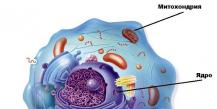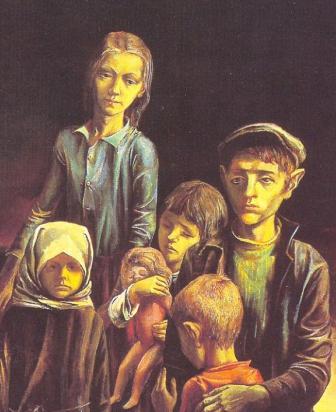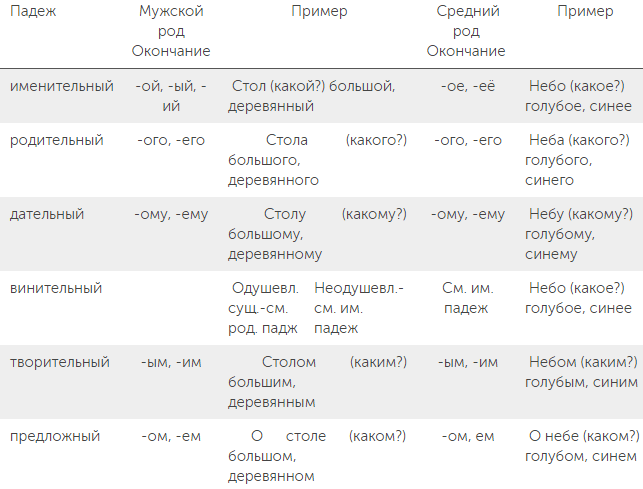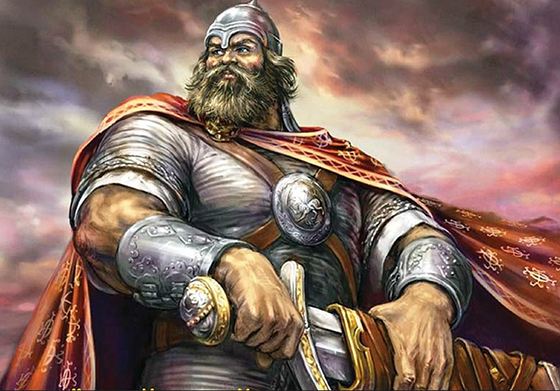Nagorno-Karabakh events of 1989. Who and why warmed up the Armenian-Azerbaijani conflict
7 simple facts explaining how everything was

Have you heard about the conflict in Karabakh and don’t know its cause? Have you read about the conflict between Armenia and Azerbaijan and would like to know what exactly is happening?
If so, then this material will help you make a basic impression of what is happening.
What is Armenia, Azerbaijan and Karabakh?
Countries in the South Caucasus region. Armenia has existed since the time of Babylon and Assyria. A country called Azerbaijan appeared in 1918, and the concept of “Azerbaijani” even later in 1936. Karabakh (which Armenians have called “Artsakh” since ancient times) is a region inhabited by Armenians for centuries, since 1991 it has been virtually an independent republic. Azerbaijan is fighting for Karabakh, claiming that it is Azerbaijani territory. Armenia assists Karabakh in the intention to protect its borders and independence from Azerbaijani aggression. (If you want to know more, just look at the “Karabakh” section of Wikipedia).
Why did Karabakh become part of Azerbaijan?
In the years 1918-1920. newly created Azerbaijan, with the support of Turkey, is trying to take over Karabakh, but the Armenians did not allow Azerbaijan to seize its lands. In the early 1920s, when the Communists occupied Transcaucasia, Joseph Stalin decided in one day to transfer Karabakh to Soviet Azerbaijan. The Armenians were against it, but could not prevent it.
Why didn’t the Armenians want to reconcile?
The number of Karabakh Armenians in Soviet Azerbaijan began to decrease gradually due to the policies pursued by the Azerbaijani authorities, which in every way interfered with the economic and cultural development of the Armenians, closed Armenian schools, also interfered with the relations of Karabakh Armenians with Armenia, and made them emigrate in various ways. In addition, the Azerbaijani authorities constantly increased the number of Azerbaijanis in the region, building new settlements for them.
How did the war begin?
In 1988, a national movement of Armenians began in Karabakh, advocating for secession from Azerbaijan and accession to Armenia. The Azerbaijani leadership responded with pogroms and deportation of Armenians in a number of Azerbaijani cities. The Soviet army, in turn, began cleansing Karabakh from the Armenians and deporting the population. Karabakh began to fight with the Soviet army and Azerbaijan. Local Armenians, by the way, are excellent warriors. Only the village of Chardakhlu (currently under the control of Azerbaijan, all Armenians were deported) gave 2 Soviet marshals, 11 generals, 50 colonels who fought with the Nazis in the Soviet army.
After the collapse of the USSR, the war with Karabakh was continued by independent Azerbaijan. The Armenians, at the cost of blood, were able to protect most of the territory of Karabakh, but lost one area and part of two other areas. In return, the Karabakh Armenians were able to occupy the territory of 7 border regions, which in the 1920s, also through the mediation of Stalin, were separated from Armenia and Karabakh and transferred to Azerbaijan. Only thanks to this, today Azerbaijani conventional artillery cannot shell Stepanakert.
Why did war resume after decades?
According to various international organizations, Azerbaijan, which is relatively rich in oil but has a low standard of living, is a country with a corrupt dictatorship. The average salary here is even lower than the Karabakh one. In order to distract the population from numerous internal problems, the Azerbaijani authorities have strained the situation on the border of Karabakh and Armenia over the years. For example, the latest clashes coincided with the Panamanian scandal and the publication of dark facts about the next billions of clans of the Azerbaijani President Ilham Aliyev.
After all, whose land is Karabakh?
In Karabakh (which, we recall, the Armenians call Artsakh) there are more than 3000 monuments of Armenian history and culture, including more than 500 Christian churches. The oldest of these monuments are more than 2 thousand years old. There are no more than 2-3 dozens of Islamic monuments in Artsakh; the oldest of them was built in the 18th century.
Whose land is the land of Nagorno-Karabakh? You are free to draw your own conclusions.




The “frozen” conflict in Nagorno-Karabakh for the first time in 22 years has a real opportunity to develop into a full-scale war between Armenia and Azerbaijan. As a result of the war in the early 90s, about 30 thousand people died, almost a million were refugees. Ruposters presents a selection of rare photographs of interethnic conflict in the post-Soviet Transcaucasus.
The territory of modern Nagorno-Karabakh since the IV century BC was part of the first Armenian kingdom, then - Greater Armenia. After 500 years under Arab influence, Karabakh again for a long time (from the 9th to the 18th centuries) became part of the Armenian state formations. In 1813, the territory became part of the Russian Empire.
Khojavend, 1993


USSR President Mikhail Gorbachev was criticized by all parties to the conflict: both Azerbaijanis (and this despite the Gorbachev statement in July 1990 that "the patience of the Azerbaijani people is endless") and Armenians (local media published "data" on the Turkic origin of the mother of the head of the USSR).
 The result of shelling "City" of the city of Martakert, 1992
The result of shelling "City" of the city of Martakert, 1992

 Armenian clergyman
Armenian clergyman
 Grandmother-Azerbaijani and Armenian fighter, 1993
Grandmother-Azerbaijani and Armenian fighter, 1993

Numerous foreign mercenaries took part in the Karabakh war (1992-1994). Armenia in the war was supported mainly by representatives of the large Armenian diaspora - in particular, fighters from the Dashnaktsutyun party.

Chechen warlords Basayev, Raduyev and Arab Khattab fought on the side of Azerbaijan (testifies to the Azerbaijani colonel: "About a hundred Chechen volunteers led by Shamil Basayev and Salman Raduev provided invaluable assistance. But they were forced to leave the battlefield due to heavy losses and leave "). According to Western sources, Azerbaijan has attracted several hundred Mujahideen from Afghanistan and the Turkish Gray Wolves.
 106-year-old Armenian woman, Tech village, January 1, 1990
106-year-old Armenian woman, Tech village, January 1, 1990


The outbreak of war in Nagorno-Karabakh in the 90s was not the first armed conflict over the disputed territory between Azerbaijan and Armenia in the 20th century. The largest clashes were in 1918-1921, when Azerbaijan did not recognize the independence of Nagorno-Karabakh. It all ended only in 1921, with the establishment of Soviet power in the Caucasus. Then the disputed territory was cut to the Azerbaijan SSR. Riots in Karabakh continually flared up throughout the Soviet period.



Losses on both sides during the war of 1992-1994 amounted to approximately 30 thousand people. The Azerbaijani authorities estimated their losses at about 20 thousand people - military and civilian. Another 1 million people have allegedly become refugees.
 Guarded pickers
Guarded pickers
 Cemetery in Stepanakert, 1994
Cemetery in Stepanakert, 1994

 Boy with a Toy Gun, Stepanakert, 1994
Boy with a Toy Gun, Stepanakert, 1994

Following the war, Nagorno-Karabakh gained de facto independence from Azerbaijan. At the same time, the territorial structure of the unrecognized republic is rather specific: almost 14% of the former Azerbaijan SSR fell into the NKR and at the same time, Azerbaijan still controls 15% of the declared territory of Nagorno-Karabakh.
 Azerbaijani writers Shikhly and Semedoglu
Azerbaijani writers Shikhly and Semedoglu

The events of February 1992 in the city of Khojaly became one of the blackest pages of the war. After the city was taken by the NKR self-defense forces, from 180 (data from the Humans Rights Watch) to 613 civilians of Azerbaijan died (according to the authorities of Azerbaijan). Some sources suggest that these events could become a “retaliation action” for the Armenian pogroms in Sumgait (1988) and Baku (1990), according to various estimates, from several dozen to several hundred people became victims.


 Camping, 1992
Camping, 1992

 Stepanakert, 1992
Stepanakert, 1992
Subscribe to our channel in Yandex.Zen!
Click "Subscribe to the channel" to read Ruposters in the Yandex feed
The conflict between Azerbaijan on the one hand, as well as Armenia and NKR on the other, escalated on April 2, 2016: the parties accused each other of shelling the border areas, after which positional battles ensued. According to the UN, at least 33 people were killed during the fighting.
Nagorno-Karabakh (Armenians prefer to use the ancient name Artsakh) is a small territory in Transcaucasia. Rugged by deep gorges, mountains turning into valleys in the east, small fast rivers, forests below and steppes higher along the mountain slopes, a cool climate without sharp changes in temperature. From ancient times, this territory was inhabited by Armenians, was part of various Armenian states and principalities, on its territory there are numerous monuments of Armenian history and culture.
At the same time, from the 18th century, a significant Turkic population has penetrated here (the term “Azerbaijanis” was not yet adopted), the territory is part of the Karabakh Khanate, which was ruled by the Turkic dynasty, and the majority of the population were Muslim Turks.
In the first half of the 19th century, as a result of wars with Turkey, Persia, and individual khanates, all of Transcaucasia, including Nagorno-Karabakh, went to Russia. Somewhat later, it was divided into provinces without taking into account ethnicity. So Nagorno-Karabakh at the beginning of the 20th century was part of the Elizabethpol province, most of which was populated by Azerbaijanis.
By 1918, the Russian Empire collapsed as a result of well-known revolutionary events. Transcaucasia became the scene of a bloody interethnic struggle, which was restrained by the Russian authorities until time (It should be noted that during the previous weakening of imperial power during the revolution of 1905-1907, Karabakh was already becoming the scene of clashes between Armenians and Azerbaijanis.). The newly formed state of Azerbaijan claimed the entire territory of the former Elizabethpol province.
The majority of the Armenians in Nagorno-Karabakh wanted either to be independent or to join the Armenian Republic. The situation was accompanied by military clashes. Even when both states, Armenia and Azerbaijan, became Soviet republics, a territorial dispute continued between them. It was decided in favor of Azerbaijan, but with reservations: most of the territories with the Armenian population were allocated to the Nagorno-Karabakh Autonomous Region (NKAO) as part of the Azerbaijan SSR.
The reasons why the union leadership made just such a decision are unclear. The assumptions put forward are the influence of Turkey (in favor of Azerbaijan), the greater influence of the Azerbaijani “lobby” in the union leadership compared with the Armenian one, the desire of Moscow to maintain a hotbed of tension in order to act as supreme arbiter, etc.
In Soviet times, the conflict was quietly smoldering, erupted either by petitions of the Armenian public for the transfer of Nagorno-Karabakh to Armenia, or by measures of the Azerbaijani leadership to creep out the Armenian population from areas adjacent to the autonomous region. The abscess broke through as soon as the union power weakened during the "perestroika".
The conflict in Nagorno-Karabakh has become a landmark for the Soviet Union. He clearly showed the growing helplessness of the central leadership. He first demonstrated that the Union, which seemed in accordance with the words of its anthem indestructible, can be destroyed. In a way, it was the Nagorno-Karabakh conflict that became the catalyst for the collapse of the Soviet Union. Thus, its significance goes far beyond the region. It is hard to say which way the history of the USSR, and therefore the whole world, would go if Moscow could find the strength to quickly resolve this dispute.
The conflict began in 1987 with mass rallies of the Armenian population under the slogans of reunification with Armenia. The Azerbaijani leadership, with the support of the Union, unequivocally rejects these requirements. Attempts to resolve the situation come down to holding meetings and publishing documents.
In the same year, the first Azerbaijani refugees from Nagorno-Karabakh appeared. In 1988, the first blood was shed - two Azerbaijanis were killed in a clash with Armenians and police in the settlement of Askeran. Information about this incident leads to the Armenian pogrom in the Azerbaijani Sumgait. This is the first case of mass ethnic violence in the Soviet Union in several decades and the first blow of a funeral bell on Soviet unity. Further violence is increasing, the flow of refugees from both sides is increasing. The central government demonstrates helplessness, the adoption of real decisions is left at the mercy of the republican authorities. The actions of the latter (deportation of the Armenian population and the economic blockade of Nagorno-Karabakh by Azerbaijan, the proclamation of Nagorno-Karabakh as part of the Armenian SSR by Armenia) are heating the situation.
Since 1990, the conflict has developed into a war with the use of artillery. Actively operate illegal armed groups. The leadership of the USSR is trying to use force (mainly against the Armenian side), but it is too late - the Soviet Union itself ceases to exist. Independent Azerbaijan proclaims Nagorno-Karabakh as its part. NKAO proclaims independence within the boundaries of the autonomous region and the Shaumyan region of the Azerbaijan SSR.
The war lasted until 1994, accompanied by war crimes and large civilian casualties on both sides. Many cities were turned into ruins. On the one hand, the armies of Nagorno-Karabakh and Armenia participated in it, and on the other, the armies of Azerbaijan with the support of Muslim volunteers from around the world (usually referred to as Afghan mujahideen and Chechen fighters). The war ended after decisive victories of the Armenian side, which established control over most of Nagorno-Karabakh and the surrounding regions of Azerbaijan. After that, the parties agreed to mediate the CIS (primarily Russia). Since then, a fragile peace has remained in Nagorno-Karabakh, sometimes disrupted by skirmishes at the border, but the problem is far from being resolved.
Azerbaijan firmly insists on its territorial integrity, agreeing to discuss only the autonomy of the republic. The Armenian side insistently insists on the independence of Karabakh. The main obstacle to constructive negotiations is the mutual bitterness of the parties. Pitting peoples against each other (or, at least, not preventing hate speech), the government fell into a trap - now it is impossible for them to take a step towards the other side without being accused of betrayal.
The depth of the abyss between nations is clearly seen in the coverage of the conflict by both sides. There is no hint of objectivity. The parties amicably keep silent the pages of history unfavorable for themselves and immensely inflate the crimes of the enemy.
The Armenian side emphasizes the historical affiliation of the Armenian region, the illegality of the inclusion of Nagorno-Karabakh in the Azerbaijan SSR, and the right of peoples to self-determination. The crimes of Azerbaijanis against civilians are described - such as pogroms in Sumgait, Baku, etc. At the same time, real events acquire clearly exaggerated features, such as a story about mass cannibalism in Sumgait. Azerbaijan’s connection with international Islamic terrorism is rising. From the conflict, the charges are moving to the device of the Azerbaijani state in general.
The Azerbaijani side, in turn, rests on the long-standing ties of Karabakh with Azerbaijan (recalling the Turkic Karabakh khanate), on the principle of inviolability of borders. The crimes of Armenian militants are also commemorated, with their oblivion completely. The connection of Armenia with international Armenian terrorism is indicated. Unflattering conclusions are made about world Armenians in general.
In such an environment, it is extremely difficult for international mediators to act, especially given the fact that the mediators themselves represent various world forces and act in different interests.
The parties declare their determination to uphold the principled positions - the integrity of Azerbaijan and the independence of Nagorno-Karabakh, respectively. Perhaps this conflict will be resolved only when the generations change and the intensity of hatred between peoples decreases.
Tags: It’s hard to believe, but Armenians and Azerbaijanis have been killing and hating each other for decades because of the small geographical area with a total area of \u200b\u200bjust under four and a half thousand square kilometers. This area is divided into upland, where the majority of the population were Armenians and plains, where Azerbaijanis predominated. The peak of clashes between nations occurred at the time of the collapse of the Russian Empire and the civil war. After the Bolsheviks won, and Armenia and Azerbaijan became part of the USSR, the conflict was frozen for many years.
Nagorno-Karabakh is a total area of \u200b\u200ba little less than four and a half thousand square kilometers // Photo: inosmi.ru
By the decision of the Soviet government, Nagorno-Karabakh became part of Azerbaijan. The Armenian population could not come to terms with this for a long time, but did not dare to oppose this decision. All manifestations of nationalism were severely suppressed. Nevertheless, the local population always said that it was part of the USSR, and not the Azerbaijan SSR.
Perestroika and Chardahlu
Even in Soviet times, clashes on national soil occurred in Nagorno-Karabakh. However, the Kremlin did not attach any importance to this. After all, there was no nationalism in the USSR, and Soviet citizens were a single people. The restructuring of Mikhail Gorbachev with its democratization and publicity thawed the conflict.No dramatic events took place on the most disputed territory, unlike the village of Chardakhlu in the Azerbaijan SSR, where the local party leader decided to change the head of the collective farm. The former head of the Armenian was shown the door and an Azerbaijani was appointed in his place. This did not suit the residents of Chardahlu. They refused to recognize the new boss, for which they were beaten, and some were arrested on false charges. This situation again did not cause any reaction from the center, but the inhabitants of Nagorno-Karabakh began to resent what the Azerbaijanis were doing with the Armenians. After this demand to join Nagorno-Karabakh to Armenia, they began to sound very loud and persistent.
The position of the authorities and the first blood
At the end of the eighties, Armenian delegations reached Moscow trying to explain to the center that Nagorno-Karabakh was originally Armenian territory, which by mistake was annexed to Azerbaijan. Management was asked to correct historical injustice and return the region to its homeland. These requests were reinforced by mass rallies in which the Armenian intelligentsia participated. The center listened attentively, but was in no hurry to make any decisions.
The requests to return Nagorno-Karabakh to their homeland were reinforced by mass rallies in which the Armenian intelligentsia participated. The center listened carefully, but was in no hurry to make any decisions // Photo: kavkaz-uzel.eu
Meanwhile, in Nagorno-Karabakh, aggressive moods against a neighbor grew, leaps and bounds, especially among young people. The last straw was the campaign of Azerbaijanis on Stepanakert. Its participants sincerely believed that in the largest city of Nagorno-Karabakh, Armenians brutally kill Azerbaijanis, which in fact was not nearly true. A crowd of distraught avengers was met by a police cordon at Askeran. During the suppression of the riot, two Azerbaijanis died. These events led to mass pogroms in Sumgait, the satellite city of Baku. Azerbaijani nationalists killed twenty-six Armenians and inflicted various injuries on hundreds. They managed to stop the pogrom only after the introduction of troops into the city. After that, war became inevitable.
The crisis
The pogrom in Sumgayit led to the fact that the Azerbaijanis abandoned everything acquired and fled from Armenia, fearing death. The Armenians did the same, by the will of fate, who ended up in Azerbaijan. The real military operations in Nagorno-Karabakh began in 1991 after the collapse of the USSR and the declaration of independence by Azerbaijan and Armenia. Nagorno-Karabakh also declared itself a sovereign state, but none of the foreign countries was in a hurry to recognize its independence.In the nineties, gangs began an open war in Nagorno-Karabakh, and the number of victims went from hundreds to hundreds. The Karabakh war flared up with renewed vigor after the troops of the USSR Ministry of Internal Affairs, which had ceased to exist, were being withdrawn from the disputed territory and, until the last, had prevented the massacre from starting. The armed conflict lasted for three years and was stopped by the signing of a ceasefire agreement. In this war, over thirty thousand people became victims.







